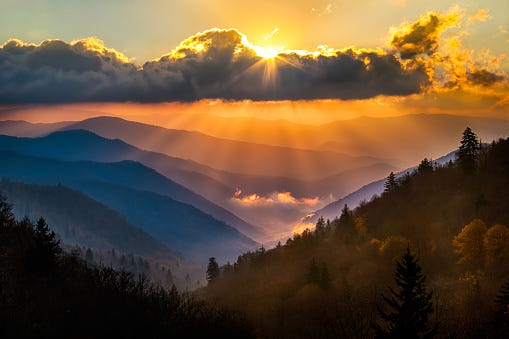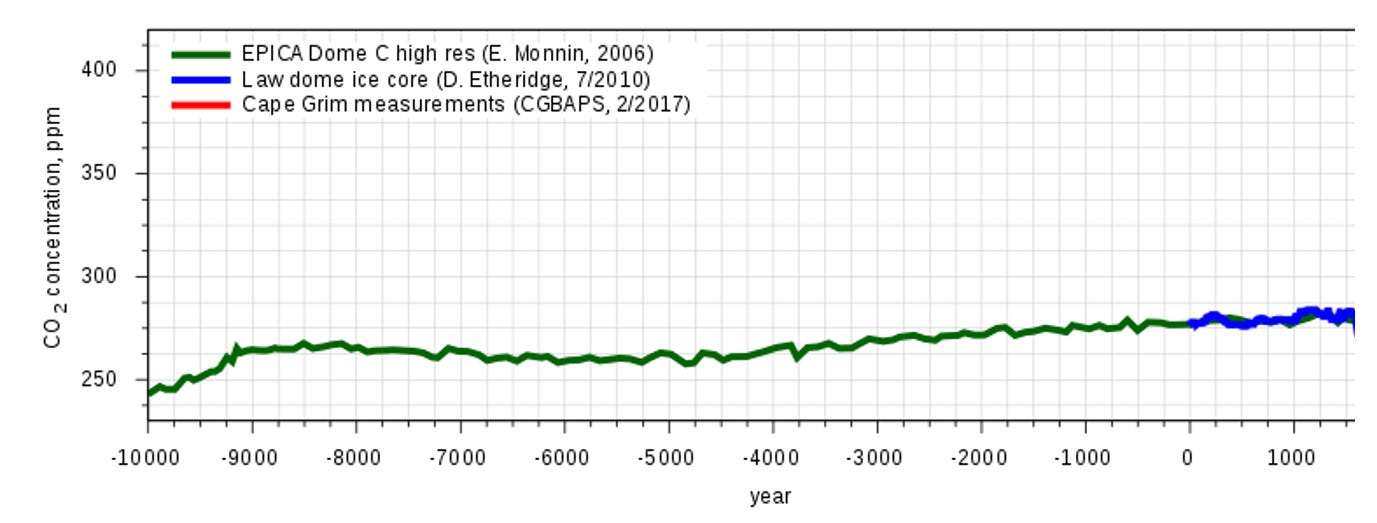Clean up on aisle... air?
Some news! Building Holocene to salvage The Holocene 🚀
Two career-related posts in a row! I promise this will be the last for a long while…
I'm thrilled to share that I've joined Anca & Tobi to help build Holocene into a generational direct air capture (DAC) carbon removal company.
After spending years in the carbon markets and carbon removal space... I can confidently say we are cooking up something pretty special over here. 🍲
Why Holocene? Why now? Why DAC?
Here are 3 short stories to tell the tale…
🗑️ Waste
We talk a lot about waste, a.k.a. “garbage”. Try a Google search and you’ll find…
Plastic waste problems — microplastics in fish (bad), >8Bn tonnes since 1950 (bad)
Waste management failures — failed recycling efforts (bad), global injustices (bad), organized crime (yikes!)
And a few glimmers of hope! — recycling robots (yay!), composting combats (woo!)
How can we not talk? The waste management industry is huge and ubiquitous.
Specifically:
2… BILLION tonnes of garbage annually, at a cost of… 2… TRILLION dollars
24/7/365… can you think of a day when you haven’t seen a garbage can or truck?
Why has society decided to create, sustain, and grow the waste management industry? Because waste is…
Harmful: waste is dangerous, risking health & safety. ☠️
Unpleasant: waste is ugly and it stinks (literally). 👃
Inconvenient: humans create and destroy. And we’re not great at the 3R’s ♻️
So the world has made a collective investment in a shared well-being to protect human prosperity. Seems reasonable to me.
A worthy and large investment — because waste is not an easy problem. It’s…
Distributed: collecting waste from billions of unique locations and individuals.
Inhomogeneous: building a system for 1000s of waste types can’t be easy.
Incomplete: management is the keyword — most waste ain’t going away.
So… the story of waste?
An inconvenient truth, a collective well-being, and an unfinished ending.
But what if I told you we were only talking about ~5% of the problem…
🌎The Holocene
The Earth’s climate — as told by its atmospheric CO2 concentration — is a heartbeat.
See? Heartbeat. ❤️ But let’s zoom in a bit.
Turns out the last ~12,000 years we’ve been in a bit of a Goldilocks zone.
Remarkable stability.
What does stability evoke? Civilization. We call this The Holocene Epoch.
Humans have been graced with The Holocene — an ultra-stable, ultra-hospitable period of Earth’s history that allowed us to prosper… catapulting us from hunter-gatherers all the way through to Chat GPT.
So… the story of The Holocene?
A royal opportunity for prosperity, not to be squandered.
🚀Holocene
Wait… only 5% of the waste problem?
Humans create about 52 billion tonnes of waste each year.
2Bn tonnes of “garbage”, or land-based waste, referenced early… and
50Bn tonnes of “emissions”, or air-based waste, in the form of CO2
Hold up… how can we call CO2 emissions waste?
Historically, CO2 emissions have not been thought of as waste, per se. We’ve shot them off into the air through smokestacks and tailpipes… never to be seen again.
Enter the popular adage… Dilution is the solution! Well… it used to be.
So is it fair to call CO2 emissions waste? Let’s see if after nearly 200 years of unabated emitting CO2 emissions past the waste test: 1. Harmful 2. Unpleasant 3. Inconvenient
Remarkable stability… whoops! 📈
All those emissions have really thrown a wrench into the remarkable stability front…
Check out the charts from early, but this time… run through to the present day.
In heartbeat terms… I think they call that a heart attack. 💔
The above is atmospheric CO2 concentration — not annual emissions. That means that it’s even a *generous* perspective of our impact.
This means the numbers you’re seeing are the impact we have had even after the Earth’s natural systems absorbed CO2 to the best of their ability (e.g., oceans, trees).
Emissions = Rising Temperatures = Bad, and Worsening Effects.
Bye-bye, Holocene Epoch… or not?
A Goldilocks approach? Time will tell. 💛
We need more waste management — well specifically, carbon management.
Call it what you want… we need to remove a LOT of CO2 from the atmosphere if we want a shot at maintaining the remarkable stability of The Holocene Epoch. This is, of course, alongside a handful of monumental, cross-economy decarbonization feats.
Enter, Holocene.👋 We’re a group of DAC industry veterans and technologists on a mission to build a generational carbon removal firm.
What’s DAC? Check out a primer here.
For those in the space, you’ll know that Holocene isn’t alone — in fact, Anca & Tobi were 2 of the first 5 engineers at one of the larger DAC firms, Climeworks.
So… why another DAC company? Everyone is searching for the Goldilocks approach:
Low energy — minimizing the drain on the grid, even using waste energy.
Low temperature — eliminating the need for fossil fuels, enter renewables.
Low impact — sustainable land, water, and resource requirements.
Long-lived — highly robust, not prone to degradation or breakage
Low cost — well below $100/tonne1 carbon removal
Just like the garbage industry, carbon waste is not an easy problem… but we think you’re gonna like what we’re cooking. 🍲
So… the story of Holocene?
Yet to be written.
One thing is certain… we’ll need all the help we can get!
Calling all world-class humans & mechanical engineers!
Calling all world-class humans & chemical + process engineers!
Calling all world-class humans & organic chemists!
Shoot us a line, or even better… pay us a visit!😊

Onwards…
$100/tonne is the industry aspiration for direct-air capture — an extremely high bar! Using our waste management analogy, the world has currently decided to pay $1000/tonne for waste management ($2Tn spent annually to manage 2Bn tonnes of CO2).
Many smart investors, hard-working technologists, and paying customers are confident $1000/tonne will NOT be the cost to bear long-term for carbon removal.




